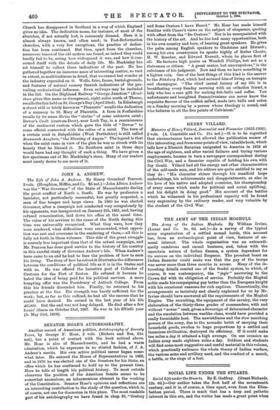THE ARMY OF THE INDIAN MOGHULS.
The Army of the Indian Moghuls. By William Irvine. (Luzac and Co. 8s. (3d. net.)—As a survey of the typical army organisation of a settled nomad horde, this account has, from an archaeological point of view, features of un- usual interest. The whole organisation was an extraordi- narily cumbrous and casual business, and, taken with the uncertain nature of Indian finance, a system dependent for its success on the individual Emperor. The proudest boast an Indian financier could make was that the pay of the troops was never more than three months in arrear. Many of the in- teresting details remind one of the feudal system, to which, of course, it was contemporary, the " jagir " answering to the Crown fief with its obligation of service. Probably the Moghul noble made his campaigning pay better than the European knight with his occasional ransoms for rich captives. Theoretically, the arrangements so incisively and clearly explained for us by Mr. Irvine should have answered all the requirements of the Moghul Empire. The recruiting, the equipment of the cavalry, the very elaboration of the thirty-three grades of commanders, with and without " sower " rank, given a Sovereign of determined character and the emulation between warlike clans, would have provided a really formidable host. The unwieldiness and the slow marching powers of the army, due to the nomadic habit of carrying their household goods, swollen to huge proportions by a settled and luxurious civilisation, destroyed its efficiency. If it could make ten miles a day it attained a high average. On one occasion an Indian army made eighteen miles a day. Soldiers and students will find some most suggestive and useful material in this volume, which practically embraces the whole theory of Indian warfare, the various arms and artillery used, and the conduct of a march, a battle, or the siege of a fort.






















































 Previous page
Previous page